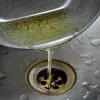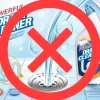Is your tap water safe to drink?
When you properly treat your water, you don’t have to worry about drinking water quality – you’ll know it’s safe. And when you install a whole-house water filtration or point-of-use purification system, you won’t have to bother with special pitchers and faucet add-ons to enjoy safe water.
But how can you be sure whole-house water filtration makes sense for your home, and how do the systems work?
Do you need to filter your water?
Some people swear by water filtration, but is it necessary for you? The answer might depend on where you live – or on factors beyond your control.
Here in the Atlanta area, boil water advisories are common. Many areas of Fulton County had one last April after a storm-related power outage triggered a loss of pressure. Authorities have also advised Brookhaven and Peachtree City residents to boil their water in recent years. Roswell residents complained about “foul-tasting” water just last summer!
Even if your water tastes ok today, it might not taste ok tomorrow. And if you’re satisfied with the data in your water utility’s annual report card, you might not be satisfied with it next year.
Think of it this way: Even Flint, Michigan residents were satisfied with their drinking water as recently as March 2014.
Your water might be safe right now, but it’s a good idea to prepare for the unknown.
Water filtration vs. water purification
“Filtering” and “purifying” water are two different things. When we refer to supplemental residential water treatment systems, we usually talk about “filters.” That being said, the most powerful systems filter and purify water:
- Water filtration refers to the reduction or elimination of particulate impurities from your water. These particles range from large, visible sediments to microscopic traces of metals like lead and copper. Most filters also remove the chlorine that is left over from municipal water treatment processes.
- Water purification takes things a step further by removing bacteria, viruses, volatile organic compounds (VOCs), and other pollutants that might be present in your water. Whenever you see a system described as “reverse osmosis,” or RO, you’re looking at a water purification system that also offers the benefits of water filtration. These systems are generally used in kitchens for drinking and cooking.
Just be aware that the terms “filtration and “purification” are often used interchangeably. Even water treatment system manufacturers might use one term when they mean to use another, so it can get confusing!
Whole-house and reverse osmosis filtration vs. conventional methods
Pitchers, faucet-mounted, and on-counter filters are the most common water filtration systems available. They’re cheap and require minimal or no installation.
But then there are the cons:
- Faucet-mounted filters might slow down water flow.
- Filters require regular replacement.
- With pitcher-based filtration, you only get clean water when you drink from the pitcher. To cook with filtered water, for example, you have to fill the pitcher and then fill your pots.
- You’re probably only filtering water from one faucet, not all the faucets you use.
- Very few of these products take advantage of RO, so you might not be removing every impurity or pollutant.
RO treatment works differently – in part because most systems purify your water in addition to filtering it. They remove contaminants from all of the water you use to drink and cook. What’s more, you usually don’t have to change filters all the time. Instead of using a pitcher or mounting something on your faucet, an RO system lives below your sink – it’s out of your way, working its “magic” discreetly.
Whole-house systems, on the other hand, generally don’t use RO. That’s because they don’t need to. After all, you don’t need to remove all VOCs and bacteria from the water in your toilets or your bathroom sink! The filtration aspect is convenient and keeps the chlorine out of your shower water, but RO is best reserved for “under the sink” applications.
That’s one reason RO filters are often called “point of use” systems and whole-house filters are called “point of entry” systems. Whole-house filters are installed at the water line – usually in your crawl space or garage – while most RO systems live completely within your home.
How reverse osmosis water treatment works
Most RO systems use a combination of carbon filtration and reverse osmosis to purify your drinking water. The most robust systems do even more! Keeping in mind that different manufacturers’ systems include different layers of filtration, here’s a step-by-step breakdown of how a powerful RO purification and filtration system might work:
- Sediment and Carbon Filtration: An initial sediment filter removes larger particles, such as rust and sand, and a carbon block filter absorbs all the chlorine, volatile organic compounds (VOCs), and organic pollutants.
- Reverse Osmosis Membrane: When water passes through an RO membrane, a thin film, it’s stripped of all additional salts, hardness, and impurities.
- Deionization: All water in nature contains mineral salts and other substances. A deionization purifier attracts and removes both positively and negatively charged pollutants.
- Ultraviolet Light: A UV lamp destroys additional harmful bacteria that sometimes occur in drinking water. It’s best to treat filtered water with UV light at this stage in the process since all of the minerals have already been removed – you’ll never have to clean mineral deposits from the UV lamp!
- Post-Carbon Filtration: This “polishing” filter removes any lingering tastes or odors before the water leaves your faucet.
To be sure, many systems just include the sediment/carbon filtration and the RO membrane. They won’t go the extra mile of exposing water to UV light, and for many people, that’s just fine.
On the other hand, some systems take things even further. We’ve worked with systems that re-mineralize water after the post-carbon filtration stage! Instead of drinking potentially undesirable minerals that end up in the water following municipal treatment, these systems let you drink minerals that naturally occur in clean water – minerals like calcium and magnesium.
The purification process can get pretty involved, but just know that anything labeled “reverse osmosis” should do a fantastic job ensuring the safety of your drinking water.
Water safety and home performance go hand in hand
We think of clean water the same way we think of clean air. They’re essential elements of a safe, comfortable home environment.
They also give you peace of mind:
- You don’t have to worry about breathing dirty indoor air because you sealed your ducts and installed a fresh air system, like an ERV.
- You don’t have to worry about high utility bills during temperature extremes because you tightened your home envelope.
- You don’t have to worry about drinking contaminated water because you filter it before it leaves each tap.
But the peace of mind is about more than just not worrying – it’s about mitigating risk. That’s why it makes sense to make informed decisions about water filtration and eliminate existing or potential threats to your health and safety.
Besides, filtered water just tastes better.






